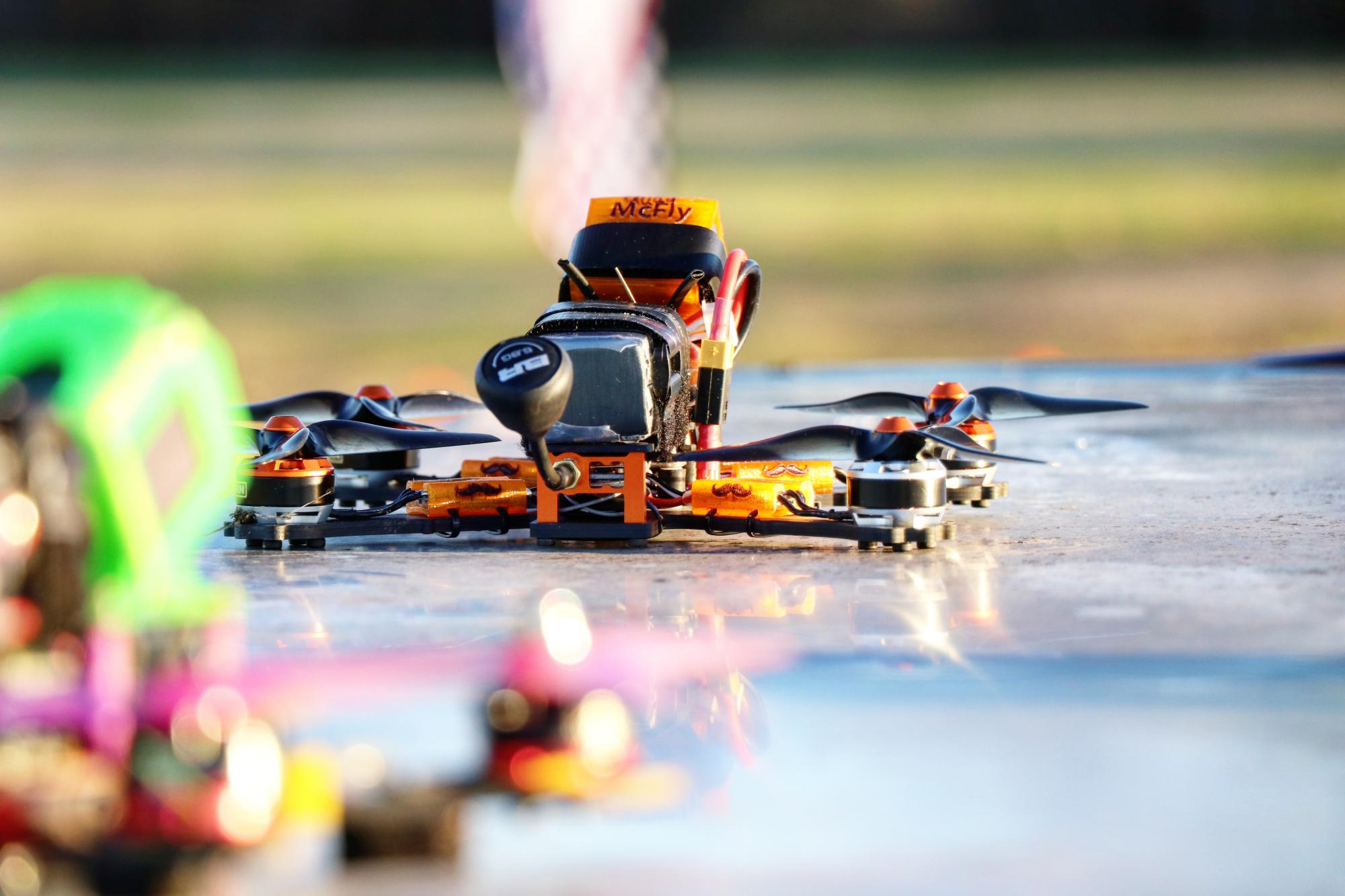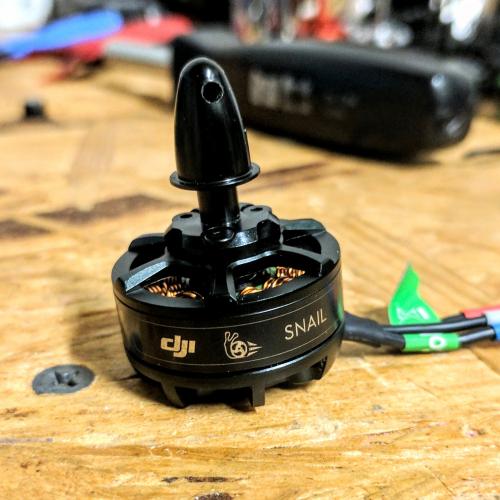- Home >
- Results >
- Motor Tests >
- Mid KV >
- DJI Snail 2305 2400kv
This is DJI's first entry into the mini-quad scene, sent over by a friendly supporter for testing.
Check out the full list of motors in this series here
Summary
Results
One of the most interesting things here is how low KV this motor tested. The motor tested in just at 2200kv, which given the stated 2400kv was a huge surprise. I ran the test a couple times to be certain and it appears to be accurate on my equipment. The performance here seems to lend some evidence to that as well. The results weren't horrible, but definitely were lower than we've seen recently with the influx of larger stator and more powerful motors. The motor falls just behind the original Emax RS2205 motor on the lower props and just ahead of it on the heavier props, clearly demonstrating the slightly lower KV. The lower KV seems to lend itself to fairly decent response times for a 5mm tall stator and better efficiency than other motors in it's class. Another thing worth mentioning here is the DJI Snail 5048S prop which was tested on this motor. The most interesting thing is the combination of that particular prop, with this particular motor. The Snail prop drew more current on this motor than any other prop (even 6") by a significant margin, but it also produced the most thrust of any of the 5" props, falling just short of the KingKong 6x4. The lower KV of the motor is really a perfect pair for this prop, keeping the amp draw sustainable and making use of the higher pitch of the propeller to increase the speed. Even with the relatively heavy current draw of this propeller, the response times were still better than I expected, staying well ahead of the relatively sluggish 5x4.5x3HBN prop, and staying essentially on par with the cyclone 5x4.6 and Buttercutter on this motor, while still generating a good deal more thrust. Transition speeds are still fairly slow compared to other motors in the Snail's weight class on those same props though, which quickly catch up in thrust as well on the larger stators. Regardless, it will be interesting to see how this prop does on other motors, but it seems for the most part that this pair was specifically designed for each other. While there appear to be some quirks to this motor, overall it still provides some interesting food for thought, and given the correct pairing with their provided props, may be worth consideration in certain applications.










































